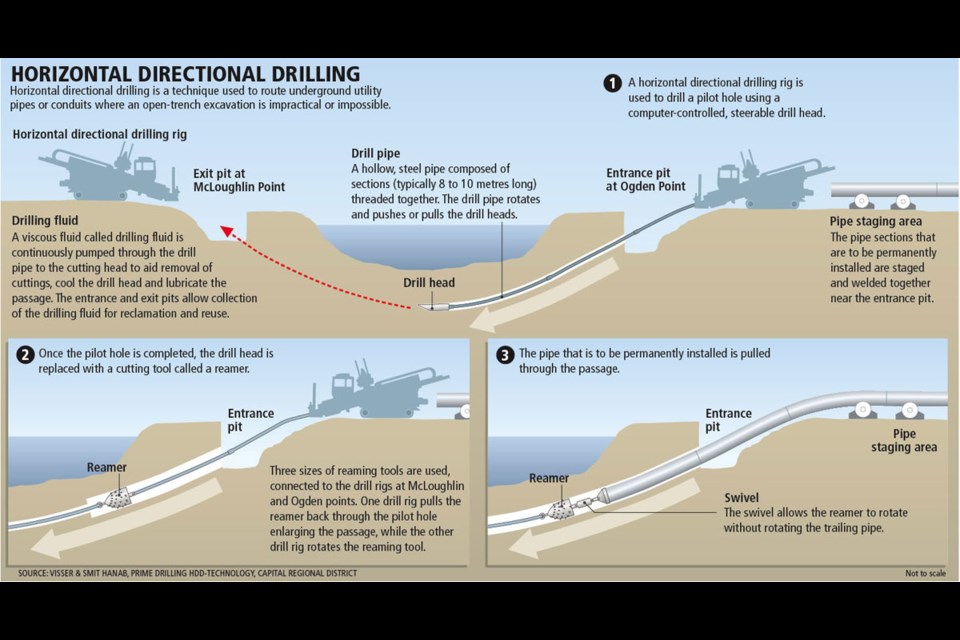The wastewater pipe being assembled on Victoria’s Niagara Street is destined for undersea duty, entering a tunnel at Ogden Point, going under Victoria Harbour, and resurfacing on the other side at McLoughlin Point in Esquimalt, where a sewage treatment plant is being built.
It is the final leg of a longer pipe that will run westward from Clover Point pump station to the harbour.
The pipe assembly on Niagara Street started March 5 and is expected to span six weeks.
Sewage from the region now flows to either the Clover Point pump station or the Macaulay Point pump station, depending on geography. The wastewater is screened and piped into the sea.
With the $765-million Wastewater Treatment Project, instead of going into the sea, sewage coming to Clover Point will be redirected into the new pipe for cleaning at McLoughlin Point.
Construction of the new wastewater treatment system began in June 2017 and is scheduled to be completed in 2020.
• Pipe specifications:
The undersea portion of the pipe, manufactured in South Korea, is 1.1 metres in diameter and 940 metres long, made up of 78 sections, each 12.2 metres in length. It is made of steel with a polyurethane liner. It has a combined weight of 615,300 kilograms.
• How flexible is it?
The pipe is designed to withstand a bend of at least 18 degrees.
The pipe enters the ground at Ogden Point at a 10-degree angle. The angle gradually reduces as the pipe approaches the halfway point, about 450 metres offshore.
After the halfway point, the pipe gradually curves upward until it reaches the exit angle of 18 degrees.
• Is the tunnel already drilled?
Horizontal directional drilling started in June 2017 from Ogden Point and is expected to be finished next month.
• How deep is the tunnel?
The deepest part of the tunnel is about 80 metres below sea level — 15 metres of ocean, 15 metres of sediment and 50 metres of bedrock.
• What keeps the tunnel stable?
The majority of the tunnel is in bedrock, which has significant strength, so a casing is not required.
There is an oversize steel casing (162-centimetres in diameter) installed at the Ogden Point end which is seated in bedrock. The casing ensures no soil can collapse into the hole.
• What is the purpose of this pipe?
The cross-harbour undersea pipe transports wastewater — up to 108 megalitres a day — from Clover Point pump station to the sewage treatment plant that will built at McLoughlin Point.
• How was the route of the pipe decided upon?
The alignment was designed by the project team in order to meet a number of technical requirements for a pipe of that diameter and length.



